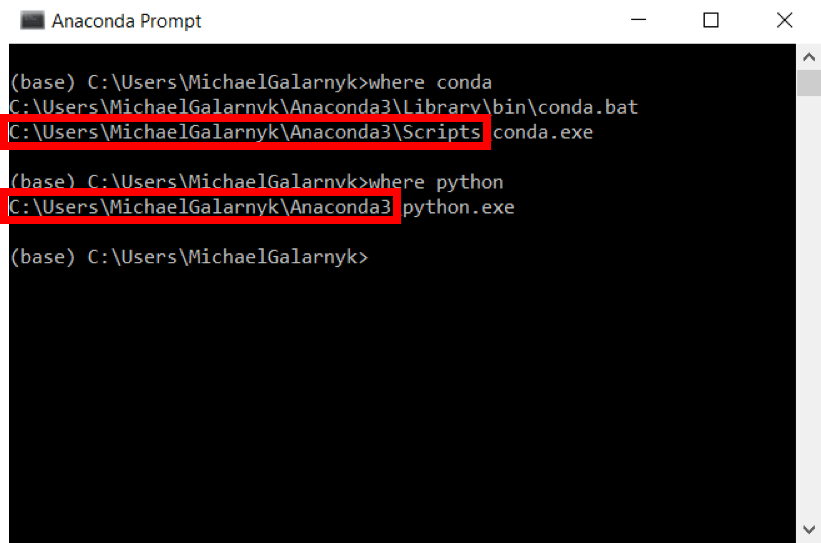
- SPECIFY CONDA PYTHON VERSION HOW TO
- SPECIFY CONDA PYTHON VERSION INSTALL
- SPECIFY CONDA PYTHON VERSION DOWNLOAD
After the environment is created, it generates a module file for using it in future. This script needs either a name or a path for the desired environment. Users can use the conda-env-mod script to create an empty conda environment. Link to section 'Step 1: Create a conda environment' of 'Installing Packages' Step 1: Create a conda environment Step-by-step instructions for installing custom Python packages are presented below. You must load one of the anaconda modules in order to use this script. To facilitate the process of creating and using Conda environments, we support a script ( conda-env-mod) that generates a module file for an environment, as well as an optional Jupyter kernel to use this environment in a JupyterHub notebook. If you are unfamiliar with Conda environments, please check our Conda Guide. Individual packages can later be reinstalled or updated without impacting others.
SPECIFY CONDA PYTHON VERSION INSTALL
One key advantage of Anaconda is that it allows users to install unrelated packages in separate self-contained environments. You can de-activate your virtual environment to end the session.ITaP recommends installing Python packages in an Anaconda environment. You can install additional Python packages to your virtual environment using the below command: $conda install -n name_of_the_env De-activate your Virtual Environment
SPECIFY CONDA PYTHON VERSION HOW TO
$conda activate name_of_the_env How to install additional Python packages to your Virtual Environment Once you create the virtual environment, you need to activate it by simply executing the below command with your environment name to switch to your virtual environment. This will install the Python version and all the associated anaconda package libraries at the path you specify during the environment creation. You can select the particular version for your virtual environment by replacing the x.x with the version you require in the below command: $conda create -n name_of_the_env python=x.x anaconda To use a particular Python version for your Virtual Environment, first search the list of available python versions using the below command: $conda search "^python$" $conda -V Create a Virtual Environment for your project Upon successful installation, close and open the terminal to take effect.

The installer prompts “Do you wish the installer to initialize Anaconda3 by running Conda init?” We recommend “yes”. Include the bash command regardless of whether or not you are using Bash shell. Once you have downloaded the Anaconda installer, run it on your terminal using the below command: #bash Anaconda3-2019.07-Linux-x86_64.shįollow the prompts on the installer screens. Make sure you are running 64-bit OS and not 32-bit. Of late Anaconda is supporting 64-bit version of Linux.
SPECIFY CONDA PYTHON VERSION DOWNLOAD
You can download Anaconda installer for Linux depending on your Python version. How to install Anaconda – Package Management system Step 1: Install Prerequisites #apt-get install libgl1-mesa-glx libegl1-mesa libxrandr2 libxrandr2 libxss1 libxcursor1 libxcomposite1 libasound2 libxi6 libxtst6 Step 2: Download the Anaconda Installer for Linux An advantage of Anaconda is, it does not require administrator privileges.


The GPG keys listed for the “MySQL 8.0 Community Server” repository are already installed.Play & Learn Quantum Computing using Qiskit Blocks.Delete a non-required Virtual Environment.How to install additional Python packages to your Virtual Environment.Create a Virtual Environment for your project.Step 2: Download the Anaconda Installer for Linux.How to install Anaconda - Package Management system.How to install Conda Package Management System.


 0 kommentar(er)
0 kommentar(er)
